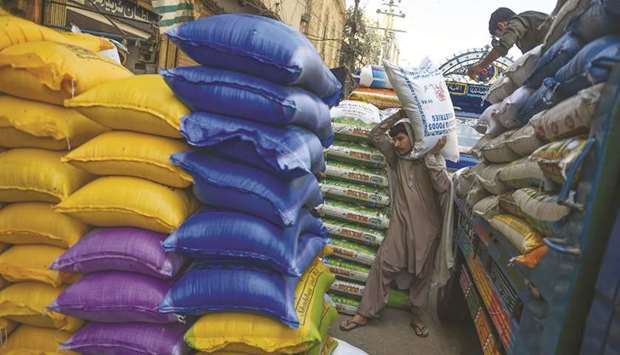Pakistan government’s battle against bloated trade deficit is finally bearing fruit as it shrank by 14% to $23.45bn in the first nine months of the current fiscal year from $27.29bn in the corresponding period last year.
The decline in deficit – down $3.84bn in the July-March period – is estimated to be in the range of $5bn-$6bn at the end of the ongoing fiscal year.
This contraction is mainly attributable to a steep fall in overall import bill even though export proceeds posted a mixed trend during the period under review.
On a month-on-month basis, the trade deficit fell by 37.74% to $1.93bn in March from $3.1bn over the corresponding month last year.
Official figures show that the country’s exports fell by 4.54% in March; making it the second consecutive month in which export proceeds have posted a decline.
In absolute terms, the exports fell to $2.1bn in March from $2.2bn over the corresponding month last year.
In February, exports edged lower by 0.37% year-on-year to $1.88bn.
The massive 33% rupee devaluation since July, 2018 coupled with cash assistance to major sectors, mainly textile and clothing wasn’t enough to boost the country’s exports as they grew by a marginal 1.05% to $17.21bn during the July-March period 2018-19, from $17.03bn in the corresponding period last year.
The government had earlier claimed that the impact of currency devaluation will be visible in the export trajectory, anticipating a pickup in foreign sales and a steep decline in imports during the months ahead.
The value of imported goods in the nine-month period was recorded at $40.66bn, down 8.25%, from $44.32bn.
The decline was even steeper in March, falling by 23.96% to $4.03bn, from $5.3bn in the same month last year.
According to the government reports, the decline in imports is mainly due to the imposition of regulatory duties on luxury items and automobiles.
Moreover, the government also slapped a ban on import of furnace oil last month.
The Commerce Division also claimed that imports have begun their downward journey due to a number of policy interventions by the government such as improved energy supply, import substitution drive, economic stabilisation, and currency devaluation.
The curtailment in import flows is manifest in the statistics that the twenty-foot equivalent unit, an approximate unit of cargo capacity used to describe the capacity of container ships and container terminals, has dropped by almost 10% between July-March 2018-19 from a year ago. The trend of compression is even more pronounced in imports under regulatory duty regime, where the value has declined from $7.9bn in July-March to $6.6bn in July-March 2018, showing a contraction of 16%.
The government has imposed regulatory duties on around 1,194 tariff lines.
The decline in deficit shows that the government’s interventions have started bearing fruits.
Data indicates that measures taken in the two supplementary Finance Acts have firmly taken hold and are now effectively curtailing imports as per the policy regime of the
government.

Workers unload rice sacks at a wholesale market in Karachi. Pakistan government’s battle against bloated trade deficit is finally bearing fruit as it shrank by 14% to $23.45bn in the first nine months of the current fiscal year from $27.29bn in the corresponding period last year.
